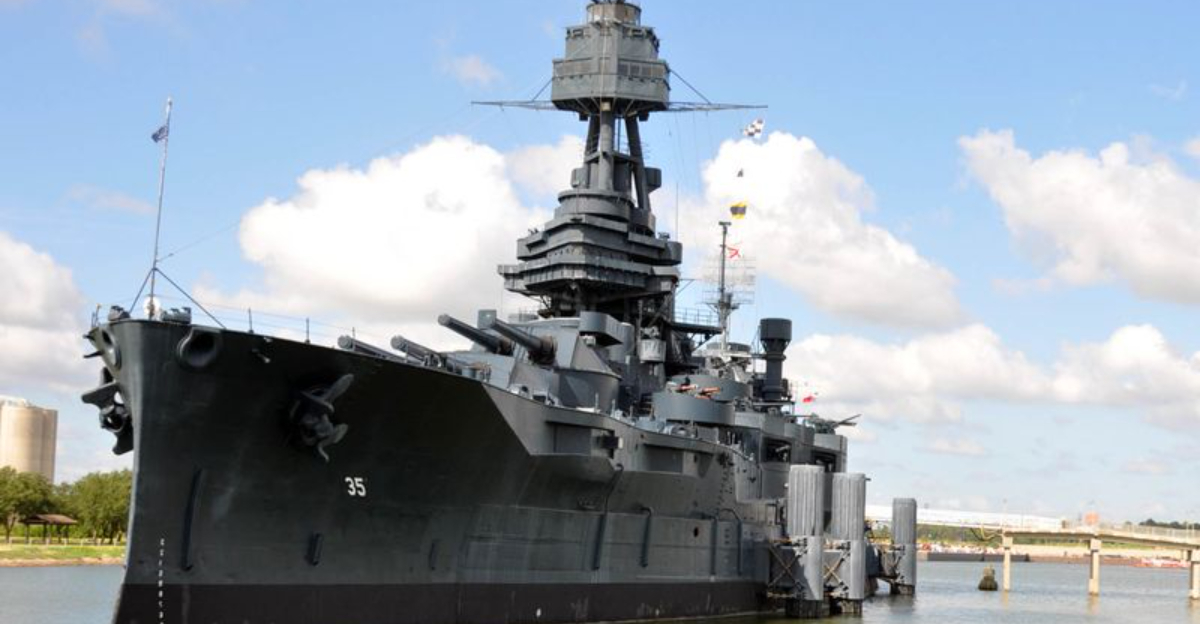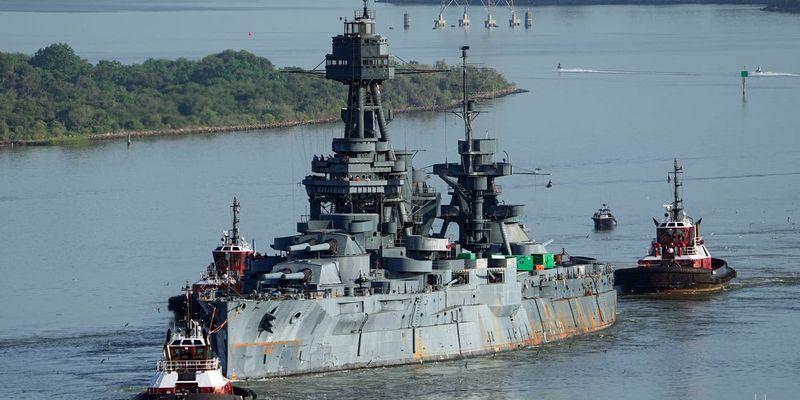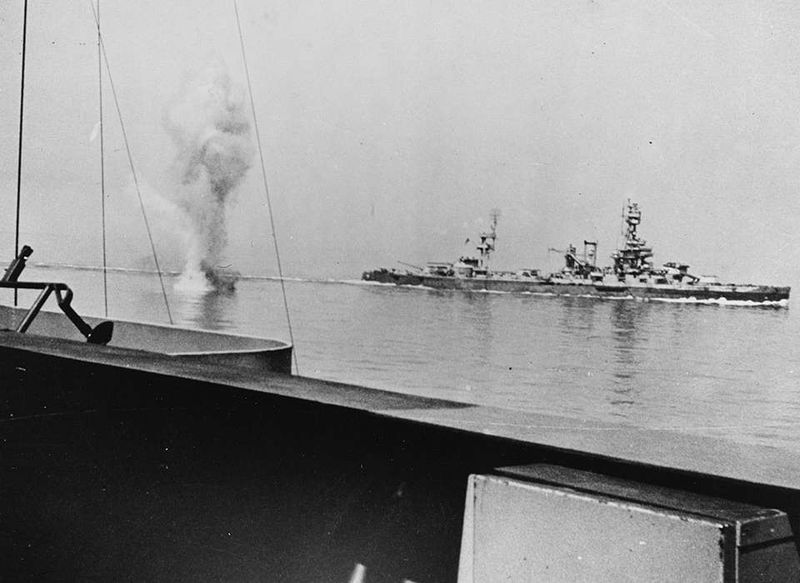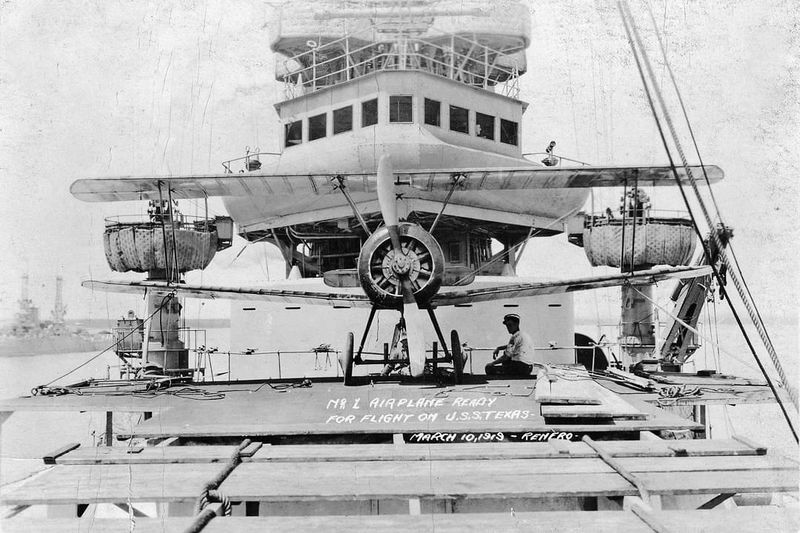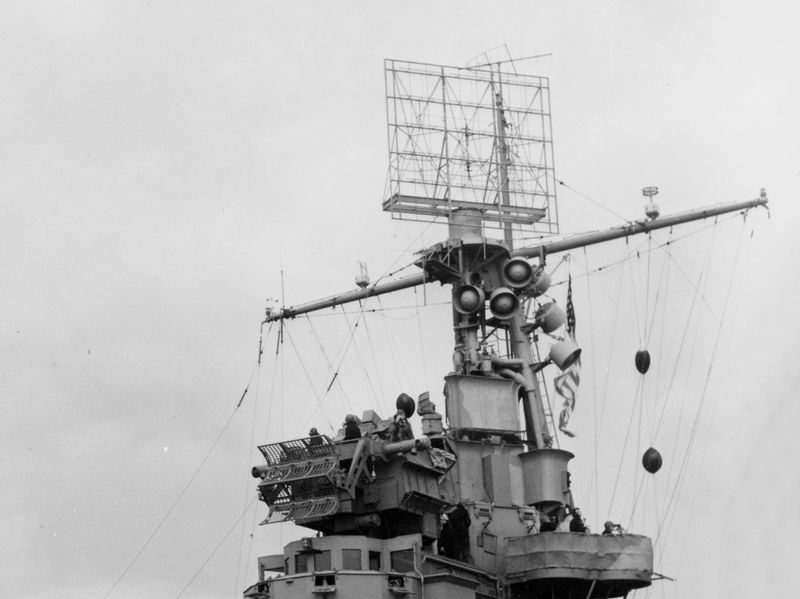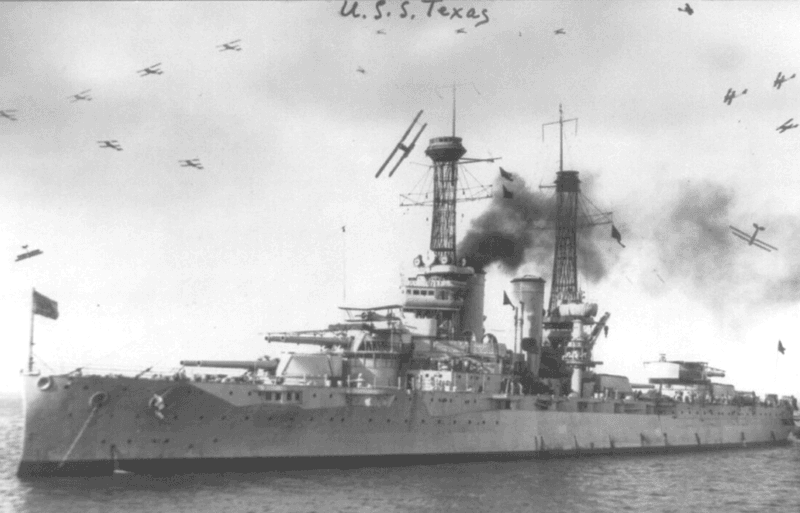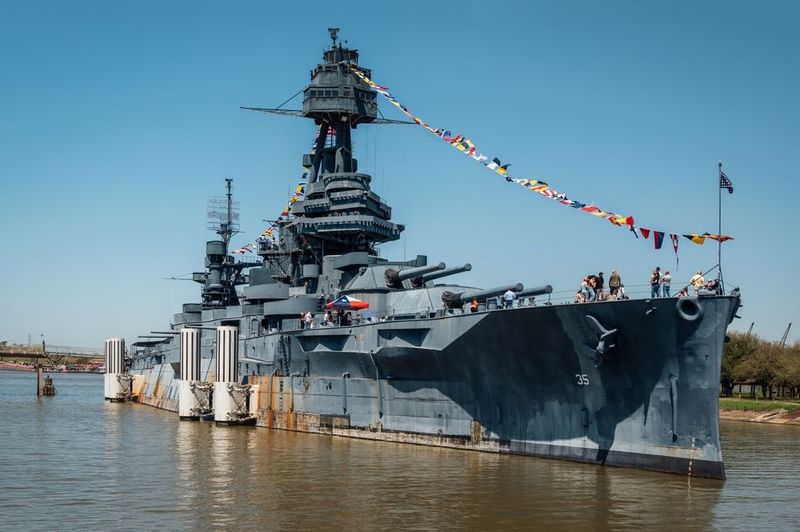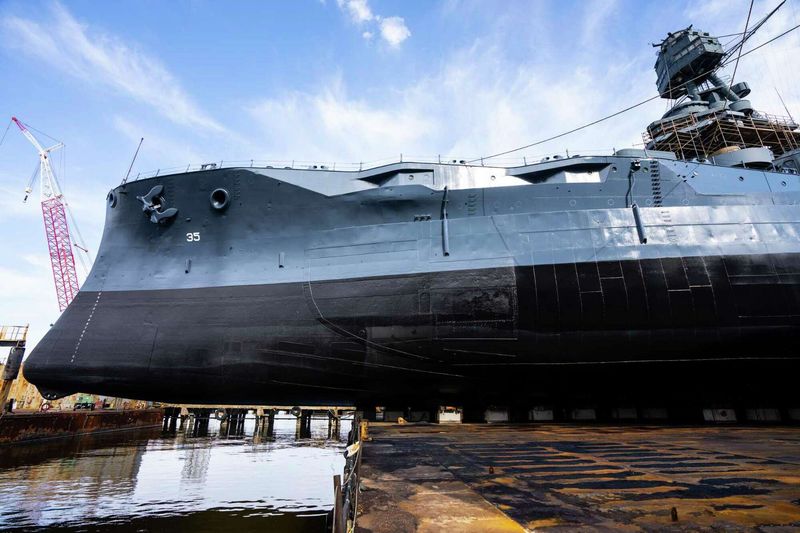The USS Texas (BB-35) stands as a remarkable testament to American naval history. This magnificent battleship served our nation through two world wars and witnessed some of the most important military operations of the 20th century. From its early days as a technological marvel to its current status as a preserved museum, the USS Texas continues to fascinate visitors with its incredible journey through time.
1. Veteran of Two Global Conflicts
Few warships can claim the distinction of serving actively in both World Wars. The USS Texas entered service just before WWI erupted and remained on duty through the end of WWII, making her a rare witness to history’s largest military conflicts. During her three decades of service, she evolved from coal-burning engines to oil, from primitive fire control to radar-guided systems. Her hull weathered Atlantic storms, Mediterranean heat, and Pacific typhoons. Sailors from multiple generations called her home, forming a brotherhood united by their service aboard this legendary dreadnought.
2. D-Day Bombardment Hero
Morning fog hung heavy over the Normandy coast on June 6, 1944. While thousands of young men prepared to storm the beaches, the USS Texas unleashed hell upon Nazi defenses from her position offshore. Her massive 14-inch guns thundered repeatedly, each shell weighing as much as a small car. These devastating projectiles pounded German bunkers and artillery positions, creating vital openings for Allied troops struggling to gain a foothold on Omaha Beach. Veterans later credited the Texas with saving countless lives during those crucial early hours of the invasion.
3. Pacific Theater Warrior
After helping secure victory in Europe, the USS Texas steamed toward another brutal fight in the Pacific. Her guns provided critical fire support during the bloodiest amphibious assaults of the war: Iwo Jima and Okinawa. For weeks, she bombarded Japanese positions, softening defenses before Marines hit the beaches. Crew members worked around the clock, enduring nearby kamikaze attacks that claimed other ships. The Texas survived these harrowing battles unscathed, despite being a prime target for enemy forces desperate to stop the American advance toward their homeland.
4. Pioneer of Aerial Defense
In 1916, while most naval commanders were still figuring out how to respond to the new threat from above, the USS Texas boldly stepped forward. She became the first American battleship equipped with anti-aircraft guns, revolutionizing naval defense strategy. The innovation couldn’t have come at a better time. With aircraft technology rapidly advancing during WWI, these guns provided crucial protection against enemy planes attempting to bomb the massive vessel. This forward-thinking adaptation marked the beginning of a new era in naval warfare, setting a standard that other battleships would soon follow.
5. Airborne Innovation Trailblazer
Long before massive aircraft carriers dominated naval aviation, the USS Texas made history. In 1919, a small biplane successfully launched from a platform hastily constructed atop one of her gun turrets. This experimental flight represented the Navy’s earliest attempts to combine sea power with air power. Pilots risked their lives taking off from these makeshift platforms, often with no way to land back on the ship. Though primitive by today’s standards, these daring experiments laid groundwork for modern naval aviation and demonstrated the Texas’s role as a floating laboratory for military innovation.
6. Last Dreadnought Standing
When naval architects designed the USS Texas, they followed revolutionary “dreadnought” principles—emphasizing heavy armor and uniform big-gun armament. These massive vessels once ruled the waves, with major powers racing to build ever-larger dreadnoughts. Today, the USS Texas stands alone. Every other dreadnought battleship has been scrapped or sunk, making her the last surviving example of this world-changing warship design. Walking her decks offers a unique opportunity to experience a vessel type that transformed naval warfare and international relations during the early 20th century.
7. Radar Revolution Flagship
Strange new antennas appeared on the USS Texas during the early 1940s, puzzling observers unfamiliar with the secret technology. The battleship had become one of the first to be equipped with radar systems—electronic eyes that could detect enemies through darkness and fog. This revolutionary equipment transformed naval combat. Suddenly, gunners could find targets beyond visual range and track enemy movements with unprecedented accuracy. The Texas served as a testing platform for these early systems, helping refine technology that would eventually become standard on warships worldwide and forever change how battles at sea were fought.
8. Survival Against Self-Inflicted Danger
During the intense D-Day bombardment, the USS Texas faced an unexpected enemy: herself. Each thunderous broadside from her massive guns created tremendous recoil force, violently shaking the aging vessel. Water began flooding forward compartments as the ship developed a dangerous list. Rather than retreat for repairs, her determined crew continued firing while simultaneously fighting to save their vessel. This dramatic episode highlighted both the raw power of the ship’s weapons and the incredible resilience of her design—qualities that allowed her to survive not just enemy attacks but also the tremendous strain of her own firepower.
9. Museum Ship Trailblazer
After surviving two world wars, the USS Texas embarked on a groundbreaking final mission. In 1948, she became America’s first battleship preserved as a museum, pioneering the concept of naval vessel preservation for historical education. Towed to her resting place near Houston, she transformed from weapon of war to classroom of history. Generations of visitors have since walked her decks, touched her massive guns, and glimpsed the cramped quarters where sailors once lived. This preservation effort created a template followed by dozens of other historic vessels, saving irreplaceable pieces of naval heritage from the scrapyard.
10. Ongoing Preservation Challenge
Time wages a relentless war against steel and salt water. For decades, preservationists have fought to save the USS Texas from her greatest enemy: corrosion. In 2022, after years of planning, the aging warrior embarked on a remarkable journey to dry dock. Carefully towed from her berth, she underwent extensive hull repairs to ensure her survival for future generations. This massive undertaking represents the latest chapter in an ongoing preservation saga—a testament to the ship’s enduring importance as both a technological artifact and a memorial to the sailors who served aboard her through two global conflicts.
